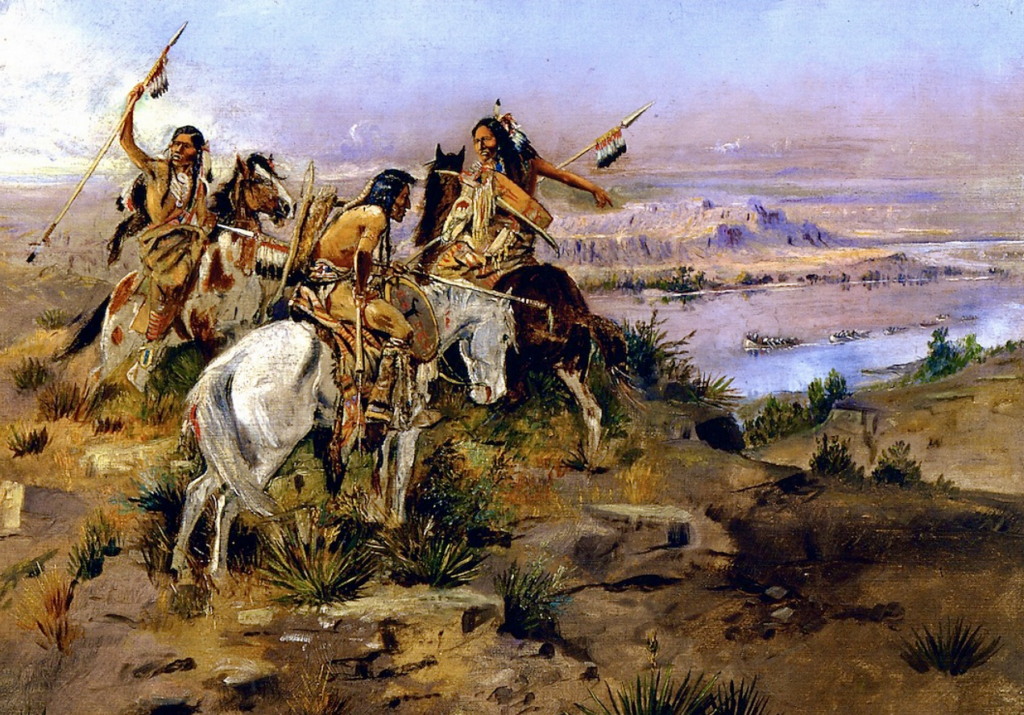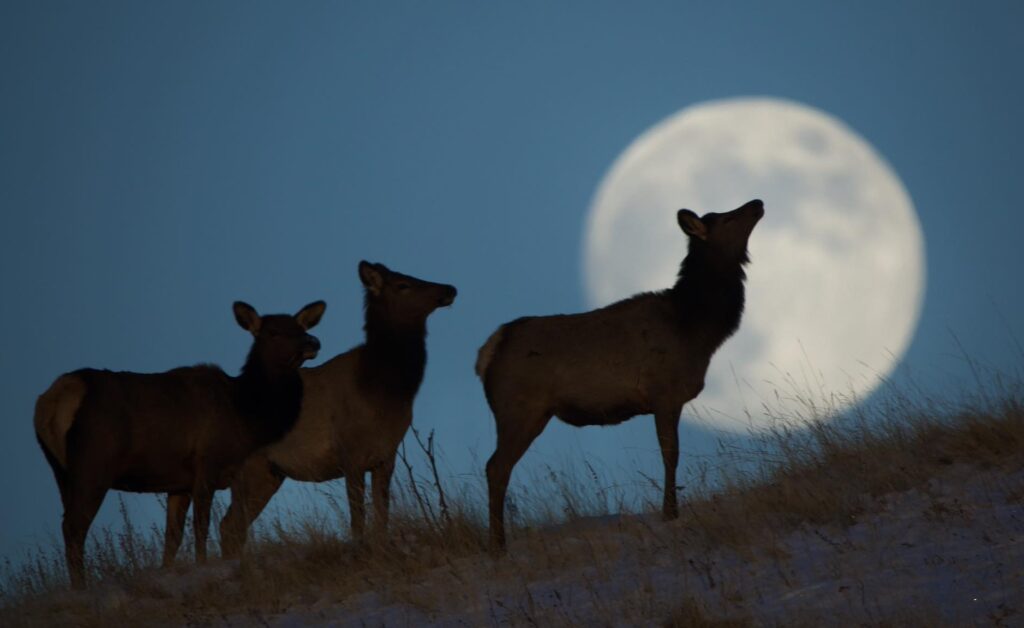EDITOR’S NOTE: Sometimes it takes the perspective of a neighbor to help bring clarity to what’s happening in our own wild backyard. Dwight Rodtka worked for years as a wildlife official in the Canadian province of Alberta. North of the US border, he spent decades dealing with many of the same species present in the Greater Yellowstone Ecosystem states of Montana, Wyoming and Idaho.
In a 2016 story in a Canadian newspaper, the man who once engaged in aggressive wolf control said his province was waging an open war on the animals. If Americans believe that attitudes toward wildlife carnivores are backward in the North Rockies of the US Rodtka said still-prevailing rural thinking in Canada is more like the slaughter of those animals that happened in the US West beginning in the late 19th century and continuing until grizzlies were restored and wolves were spared from total annihilation south of the US-Canada border because of federal protection.
While some view Canada as a country of wildness worthy of emulation, Rodtka says Canadian conservationists are today worried about losing species in the borderlands and northward into the Canadian Rockies, particularly on private lands and public lands managed by provincial governments.
Rodtka recently penned an essay titled “The Truth about Snares” which we are re-publishing, below. Worldwide, snares are treated as a serious scourges to wildlife, the same way land mines are viewed as horrific, lingering implements of war. Lethal, indiscriminate in who they harm, looming invisibly and sometimes abandoned in their environments, they’re condemned as anachronisms that have no place in modern times.
Snares don’t blow up their victims or put ultra-lethal cyanide in their mouths; they’re generally made of a loop of wire that animals unknowingly walk into head first and then suffer strangulation as resistance and the flight response only makes the lethal coil become tighter. As Rodtka, who set many snares says, deaths are not often swift, but painful and agonizing.
In many counties, snares are used to kill animals for food or for their furs. Each year globally, millions upon millions of animals die from them, many non-target species and some domestic pets. Snares are condemned as tools of destruction that represent a grave threat to wildlife conservation. Read this post from World Wildlife Fund about the threat they pose of tigers in southeast Asia.
Closer to home, wildlife experts say that in recent years, with states not only approving use of snares, but legally greenlighting their deployment to take wolves, they represent an ongoing lethal hazard to non-target animals, including grizzly bears, wolverines, and Canada lynx, all federally protected. Sometimes they are set by trappers near hiking trails frequented by people and their dogs.
Read the testimony of Dr. Christopher Servheen who appeared before a hearing before the US House of Representatives and called attention to the fact that the Montana legislature voted to allow the use of snares of catch wolves and coyotes in known occupied grizzly bear habitat. For 35 years Servheen led national grizzly bear recovery efforts for the US Fish and Wildlife Service and at one time supported removing bears from federal protection. In recent years, following retirement, he reversed course and now is opposed to delisting, in part because of what he calls Draconian trapping, bear baiting and hounding practices in Montana, Wyoming and Idaho.
Last summer, the Wyoming Supreme Court ruled that if a person loses a domestic dog or cat to a trap or snare, responsibility resides with the pet owner, not the trapper who set the snare. That fueled outrage from those seeking trapping reform. The issue flared again earlier last winter with a different trapping device when Becky Barber, who lives in Afton, Wyoming in the southern tier of Greater Yellowstone experienced the loss of her English bull terrier, Jester. The dog was killed in #330 conibear set out in the Swift Creek drainage and Jester wandered into the body-gripping trap while Barber took a few of her dogs out on a hike.
The Wyoming Game and Fish Department issued a citation in connection with an incident in Swift Creek Drainage east of Afton, Wyoming Game and Fish Department spokeswoman Breanna Ball told Cowboy State Daily. “This is an unfortunate situation and our sympathies are with the dog owner. The incident is currently under investigation. There was a violation of trapping regulations and the trapper was cited for setting a Conibear trap too large to be set out of the water on public land.”
Regarding snares, Rodtka told Yellowstonian that despite claims to the contrary in Montana, Wyoming and Idaho, it is easy for adult grizzlies and cubs to wanted into a snare and die, especially when trappers use bait to lure animals to a set. “A grizzly can easily wander into a set for wolves. One thing I’ve noticed is that they [bears] usually die much quicker than wolves because they’re carotid system is exposed much more,” Rodtka said. “The big thing for me is that snare are so horrendously cruel. Jesus Christ, all you need to do is go online. There isn’t a thing you can do to mandate consistently of behavior. The only thing that would help is mandating that traps be checked very 24 hours but that’s often violated and even when a trapper is complying there’s a high probability a snare will kill or seriously injure the animal caught in it.”
Grizzlies are currently protected under the federal Endangered Species Act and killing a bear is punishable by a steep fine, potential time in jail or both. Below is Rodtka’s essay:

The Truth About Snares
by Dwight Rodtka
Snares are archaic and torturous devices that should have been banned years ago. I know plenty about snares. I’ve seen firsthand what they do and spent almost 40 years working as a predator control specialist for the government agency Agriculture Alberta. I can also relate to the what my American counterpart, Carter Niemeyer, said in a recent story in Yellowstonian.
Snaring animals and birds has been around for as long as humans has been killing them for food, clothing, profit or sport. Interestingly, the use of snares is still widespread today and snare design—after thousands of years of use—has not progressed significantly.
Despite the fact that snares are inhumane killing devices because of their inherent design (they consist of a noose of some material—and now steel cable— set to “snare” an animal or bird around the body to hold or kill it), they are widely considered as “lethal/killing devices.”
The Fur Institute of Canada has certified a “humane” death for a wolf captured in a “lethal/killing” device as being irreversibly unconscious within 300 seconds of capture. Under laboratory conditions, it takes approximately eight minutes to strangle a canid (dog, wolf, coyote etc). For an eight-minute death (three minutes longer than what is considered to be humane) to occur by snaring, the snare must be positioned in an exact location on the neck – not too far ahead or too far back, and oxygen and blood flow must be stopped instantly. Furthermore, the lock must function without binding or plugging with hair etc. Since snares depend entirely on the animals own strength to tighten the noose and thereby strangle itself, there are a multitude of factors which can interfere with the snaring process.
Over the years, various modifications to snares have been made. Different styles of sliding locks have been added to the cable to hold tension on the “choke hold” the wire has on the animal, with the intent to strangle it. Springs have also been added to some snare designs with the intent to maintain tension. Breakaway snares, although touted as a solution to non-target catches, are little better than regular ones. By design, breakaway snares open when a heavier and stronger animal is caught. But they must be strong enough to hold a wolf, so everything smaller or weaker dies. If a moose, elk or other large animal happens to get caught by the muzzle in a breakaway snare, or the snare tangles in flexible brush, the snare will not release. The caught animal dies a slow and horrible death.
Despite the modifications as described above, and in spite of these modifications being misleadingly portrayed as technical advances, modified snares (1) have not been tested and (2) are subject to the same and additional problems as traditional snares.
An animal can be snared anywhere on its body, depending on the animal’s movement and stance when it encounters a snare, and the snare height and diameter (which often changes because of weather and the locks’ ability to freely slide, a function dependent on wind, snow, freezing, etc.).
Wolves tend to suffer more than other animals in snares because they have extremely well muscled necks and reinforced trachea. Snared wolves that are very lucky may only live for hours; the unlucky ones take days to die.
Wolves tend to suffer more than other animals in snares because they have extremely well muscled necks and reinforced trachea. Snared wolves that are very lucky may only live for hours; the unlucky ones take days to die.
Dr. J. Diaz, a professor in the Department of Veterinary Medicine at the University of Calgary has researched the time it takes for canids to die from strangulation. His conclusion is that: “Death can take hours through an extremely painful and slow process.” Dr Diaz notes that he cannot comprehend the decision of government “to elicit this kind of suffering and pain to a living being.”
Since snares are clearly inhumane by any standard and should therefore be illegal, why are they are allowed here in Alberta? Because the provincial government has declared them—although they have never been officially tested—to be “lethal/killing devices!” Until proven otherwise, their use can continue. Because of this stance, animals across Alberta are doomed to suffer lingering deaths in these inhumane and barbaric torture devices.
In addition to being inhumane for the target species, the issue of snare bycatch is equally disturbing. In Alberta, thousands of snares are set on game trails, natural travel ways, or are set in abundance around a pile of carcasses set out for the express purpose of baiting wolves. It is a common practice to set out 25 to 100 snares around a baited location (a practice known as saturation snaring) so that an entire wolf pack will be caught.
However, myriad other species, including deer, moose, elk, eagles, lynx, cougars, bighorn sheep, bears, wolverines and small mammals, are also caught in these snares. Referred to as “bycatch” or “non target,” these animals also suffer painful and lingering deaths. Surely we should not be torturing and squandering our precious public resources in this manner.
Here’s an example of “bycatch.” Alberta Fish and Wildlife authorized the use of 12 to 15 snares to a rancher in the Rocky Mountain House area because of “wolf depredation problems.” In one week, these traps snared and caused the deaths of one wolf pup, one or two whitetail deer, one black bear and one grizzly bear. If this typical example is extrapolated to the thousands of snares blanketing the west country, the magnitude of bycatch killing could be staggering. Even yearling cattle have been found with snares around their legs.
Here’s an example of “bycatch.” Alberta Fish and Wildlife authorized the use of 12 to 15 snares to a rancher in the Rocky Mountain House area because of “wolf depredation problems.” In one week, these traps snared and caused the deaths of one wolf pup, one or two whitetail deer, one black bear and one grizzly bear.
In addition to them being torture devices, the absurd status that snares have as “lethal/killing devices” means that there are no monitoring requirements placed on their deployment. It is perfectly legal in Alberta to set the snare in October and not check it until the end of March. The wolf (or whatever other animal or bird happens to get caught) suffers until it dies. The wolf’s fur is worth little, but the bounty is still paid, and the by catch does not need to be reported, so why bother?
Snares also present a serious danger to pets, as pets can inadvertently end up in wolf snares when accompanying skiers or hikers. Bait stations also pose a public risk because, during the spring, the risk of encountering bears at these wolf baits (which have now become bear baits) is significantly escalated. Hunters who bait bears, coyotes and wolves are required to post warning notices around their baits. Those setting out snares are not required to post any warning signage in the area.
So why are these snares allowed? The answer is simple—wolf snaring is now a recreational sport. There is a $300 to $500 bounty being paid on every dead wolf by local governments or one of the secret bounties paid by the Alberta Fish and Game Association, the Wild Sheep Foundation and the Alberta Trappers Association.
Surely we should be outraged by this unconscionable practice. Alberta government needs to bring wolf management and their treatment into the 21st century. It sure sounds like the same thing needs to happen in Montana, Wyoming and Idaho, too.




